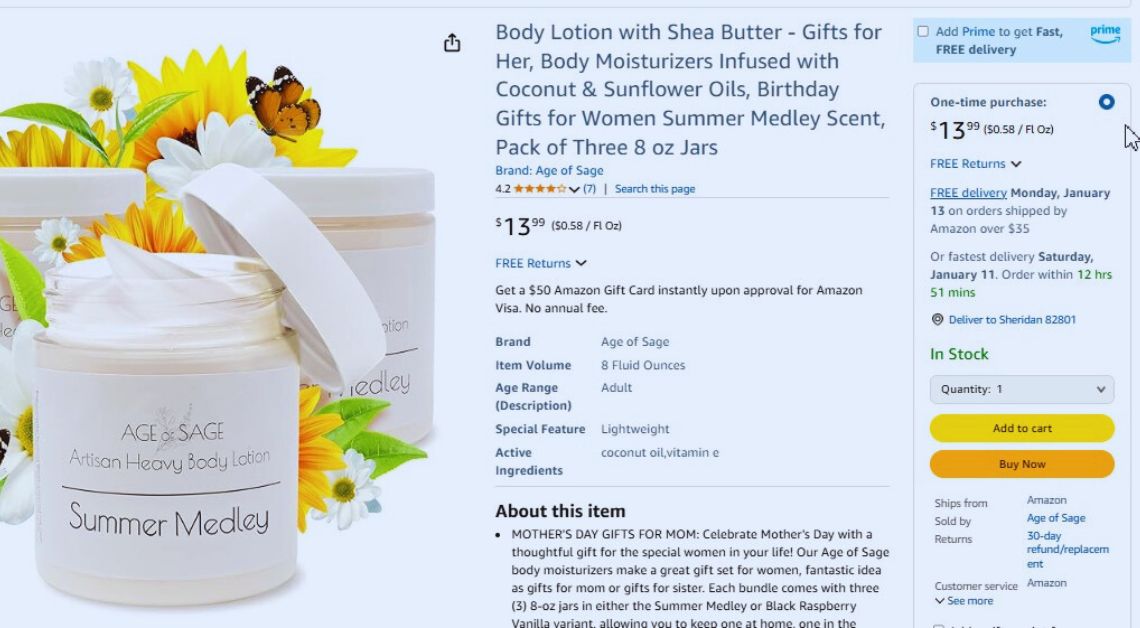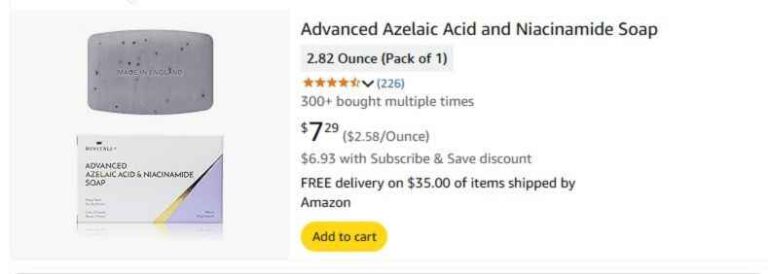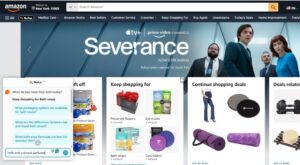
The 2025 Amazon product title requirements, effective January 21st, enforce a 200-character limit, restrict special characters, and limit word repetition to improve listing quality and customer experience.
Are you tired of worrying about Amazon listing penalties for overly long product titles? Frustrated with inconsistent listing quality and titles packed with duplicate information?
Concerned that ineffective titles are hurting your sales and driving customers away? If so, you need to understand the new 2025 Amazon product title requirements.
These updated guidelines address these pain points by enforcing stricter Amazon product title character limits, restricting special characters, and limiting word repetition. By adhering to these new rules, you can improve your listing quality, enhance the customer shopping experience, and increase your chances of sales success on Amazon.
Updated Amazon Product Title Guidelines
Effective January 21, 2025, Amazon is introducing new product title guidelines to improve consistency and the shopping experience.
Titles must be under 200 characters, and special characters like !, $, and ? will no longer be allowed unless part of the brand name. Additionally, repeated words are limited to avoid redundancy, with some exceptions for prepositions, articles, and conjunctions.
Sellers should update non-compliant titles before the new policy goes into effect. After January 21, they can use Manage All Inventory to fix any issues. Amazon will provide correction suggestions to brand owners, who will have 14 days to act before titles are automatically updated.
Listings will stay active during this process, and Amazon will host an Ask Amazon event on January 8, 2025, to answer any questions.
2025 Amazon Product Title Insights
Why do optimized product titles matter to Amazon sellers?
How you write your product titles directly impacts how many people find and buy your products online.
In this video below, you’ll see an example of a product listing whose title needs improvement and optimization.
Your product title plays a key role in search visibility and conversion. A well-optimized Amazon-compliant title with relevant keywords can help you rank higher in search results.
Additionally, the title contributes to your product listing’s Click Through Rate, as our founder and CEO, Steven Pope, explained in this LinkedIn post.
Suppose you are searching for “niacinamide soap” on Amazon and these two products below are on the search results page, which are you likely to click?
You are more likely to click on the first product with a longer and more descriptive title.
How do you add keywords to your Amazon product titles?
A well-balanced title helps improve Amazon SEO, making products more searchable and discoverable.
Product titles are a great place to use the primary keywords you identify through your keyword research.
How do you optimize title density
AmazonProduct titles are a great place to use the primary keywords you identify through your keyword research.
- Include Top Keywords
Place the top five high-traffic keywords at the start of your product title to boost search visibility.
Use Exact Match Keywords
Match high-volume keywords directly in your title (e.g., “turmeric soap bar”). Adding precise keyword matches improves indexing for relevant searches.
Strategic Keyword Placement
Place high-search-volume keywords at the beginning of your title. Ensure the title remains natural for readability without excessive repetition.
Keyword Density Ratios
Aim for low density on high-volume terms already heavily used in other titles. Focus on finding low-density keywords with high search volume to gain a competitive edge.
Target Specific Keywords
Optimize with seasonal or niche keywords (e.g., “handmade Thanksgiving bar soap”). Avoid overusing irrelevant terms or brand names.
Tools for Keyword Analysis
Use tools like Helium 10 to analyze keyword volume and identify high-impact keywords that are underutilized in product titles.
Amazon Product Title Best Practices
Emphasize Your Unique Selling Proposition (USP)
Highlighting your product’s unique qualities grabs attention and sets it apart from competitors.
Use persuasive language to address customer needs or pain points.
Example:
Good: “Gluten-Free Pancake Mix – Made with Organic Almond Flour, 16oz”
Bad: “Delicious Pancake Mix – Best in the Market”
Specify Key Product Attributes
Including attributes like size, color, material, or quantity ensures clarity and boosts conversions.
Combine the brand name, target keyword, and product attributes in a concise format.
Example:
Good: “Nike Air Zoom Pegasus 39 – Men’s Running Shoes, Black, Size 10”
Bad: “Nike Running Shoes – Comfortable and Stylish”
Eliminate "Empty" Words
Words like “very” or “awesome” add no value and waste space.
Stick to descriptive and functional keywords.
Example:
Good: “Bamboo Cutting Board – Large, Durable, Easy-to-Clean”
Bad: “Authentic Bamboo Cutting Board – Super Amazing Quality”
Check Competitors’ Product Title Optimization
Learn from competitors to refine your titles and identify overlooked opportunities.
Research competitor titles to find unique keywords or formatting techniques.
Example:
If competitors list “Stainless Steel Water Bottle – 32oz,” you could add “Leak-Proof” to stand out.
Utilize Product Title Formulas
Structured titles ensure consistency and relevance across products.
Use niche-specific formulas for your product category.
Example Formulas:
Electronics: Brand + Product + Specs (e.g., “Sony WH-1000XM5 Wireless Headphones – Noise Canceling”)
Beauty: Brand + Product + Attributes (e.g., “Maybelline Fit Me Foundation – Matte Finish, 120 Classic Ivory”)
Many sellers place their brand name first in their product titles. However, for smaller brands, it’s often more effective to position the brand name towards the end of the title. This prioritizes keywords and product information, which are more crucial for attracting customer attention and improving search visibility.
Use Positive Sentiment Words
Reality Role of Language Improving E-commerceLanguage has a very important role to attract customer’s attention to buy a product
Titles with a positive tone tend to attract more customers. Positive words make the product feel appealing and trustworthy.
Include at least two positive words such as “smart,” “durable,” or “easy-to-use.” Minimize words like “tiny,” “bad,” or “flat” unless they serve a specific positive context (e.g., “tiny tool for precision crafting”).
Example:
Positive: “Smart Vacuum Cleaner with Easy Navigation and Powerful Suction”
Neutral: “Vacuum Cleaner with Navigation and Suction Power”
Consider Readability While Optimizing for SEO
Readable titles are more engaging, but search optimization (SEO) ensures visibility. Strike the right balance for your product category.
Use short phrases and simple words. Limit complex or jargon-heavy language.
Aim for a Flesch readability score of around 58 or higher.
Example:
Optimized: “Wireless Earbuds with Long Battery Life, Noise Cancellation, and Fast Charging”
Hard to Read: “Wireless Bluetooth Earbuds High-Performance Battery, Noise Reducing Tech”
Utilize Connected Keywords
Threecolts Research shows that top-performing titles often use connected keywords to form phrases, enhancing relevance and readability.
Use tools to identify common keyword patterns in your category and structure them as cohesive phrases.
Example:
Connected: “Handmade Gold-Plated Name Necklace – Personalized Gift for Her”
Disjointed: “Gold Necklace, Gift, Handmade, Personalized Name”
Test and Analyze Your Efforts
Data-driven insights can refine your titles for better results.
Use Google Analytics or Amazon Seller Central to track performance and tweak titles.
Example:
Test titles like “Organic Peanut Butter – No Added Sugar, 16oz” versus “Natural Peanut Butter – Sugar-Free, 16oz” to see which performs better.
While optimizing your Amazon product titles might seem straightforward, it often comes with challenges like adapting to changing Amazon policies and maintaining continuous optimization.
These hurdles require a deep understanding of Amazon’s evolving landscape and dedicated effort to keep your listings compliant and effective.
By partnering with an experienced Amazon agency, you can navigate these complexities with ease. Agencies with catalog experts who work daily on Amazon listings can ensure your titles meet all requirements while maximizing search visibility and conversion rates.








